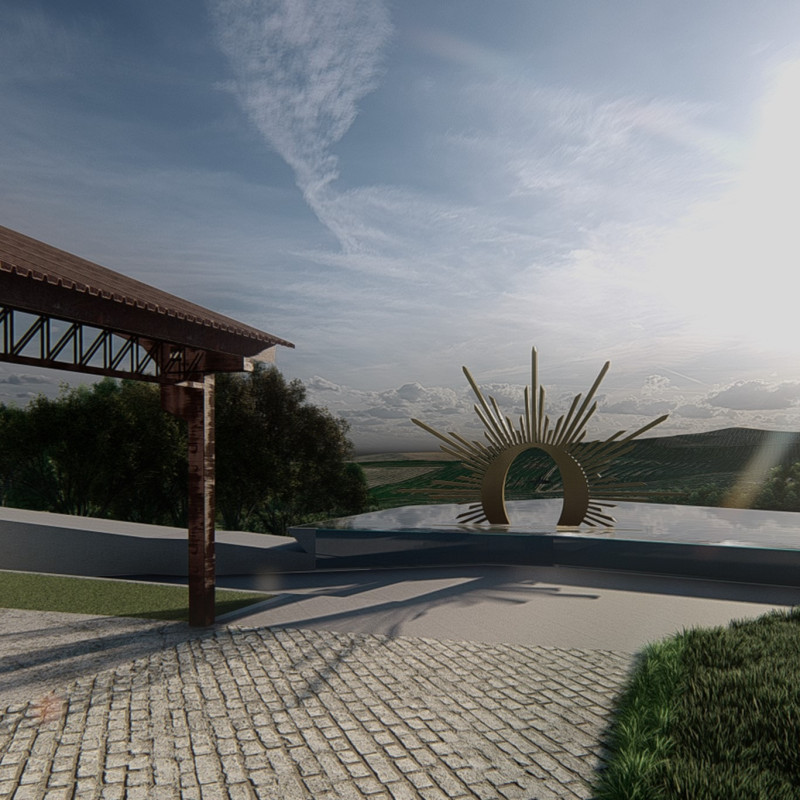5 key facts about this project
The design is situated in a picturesque vineyard landscape, where the relationship between the natural environment and the constructed space plays a crucial role. The concept revolves around the idea that architecture, much like wine, reflects its terroir. By integrating the new buildings with the surrounding topography, the design enhances user experiences and tells a story about the history of winemaking. Visitors are encouraged to engage with both the landscape and the architecture, creating a meaningful connection to the site.
Lookout Square
A central feature of the design is the lookout square, which provides an expansive view of the vineyard and the landscape beyond. It serves as a gathering point, framing the view with the farm's logo. This element invites visitors to linger, offering an opportunity to appreciate the natural beauty around them while fostering a sense of place.
Tracking Feature
The tracking feature stands out for its focus on sensory engagement. It is designed to create a feeling of presence as people move through the space. Visitors are encouraged to connect with their surroundings in a memorable way. This area also showcases the history of wine through displays that resemble trophies, connecting the past of the vineyard with its vibrant present.
Tasting Room
The tasting room exemplifies a straightforward approach to design. It is meant to be functional, allowing the focus to remain on the wines and the vineyards surrounding them. The architecture is intentionally neutral, promoting contemplation and engagement with the tasting experience. By minimizing distractions, this space invites visitors to immerse themselves in what they are experiencing.
The design draws inspiration from Portuguese Baroque urbanism, which emphasizes the creation of pathways that reveal the beauty of the environment. However, rather than concentrating on monumental buildings, the design encourages exploration of the vineyard landscape. As visitors walk through, they are guided on a journey that intertwines with the cultural heritage of winemaking.
The careful integration of these design elements fosters a deeper appreciation for the terroir. Visitors are invited not only to taste the wine but also to connect with the land that produces it. This thoughtful approach reflects the unique identity of the vineyard, creating a space that resonates with the essence of its setting.

















































